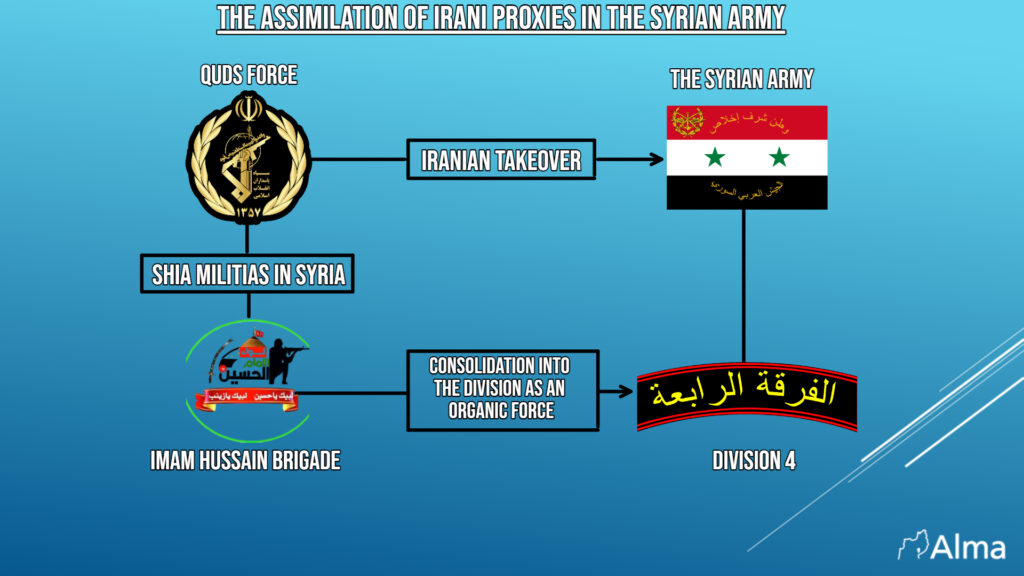Iran is attempting to seize command of the Syrian army. The takeover was achieved in part by the assimilation of Shiite militias into the Syrian army. According to our assessment, the “al-Imam Hussein Brigade” militia (or at least some of its subunits), also known by its operatives as the “Lions of the Fourth Division” or “Maher al-Assad’s Men,” was integrated as an organic force within the 4th Division, and the militia operatives actually became division soldiers. The 4th Division has evolved into an Iranian proxy, reporting directly to the Quds Force, which conducts direct offensive operations against Israel and American soldiers in Syria. Maher al-Assad (brother of President Bashar al-Assad) commands the 4th Division.
The “al-Imam Hussein Brigade” is a militia made up of sub-units (militias) primarily made up of Syrian operatives (Sunnis, Druze, and Shiites) and Iraqi operatives (of Shi’ite background). In 2017, militia unit operatives began identifying themselves as “al-Imam Hussein Brigade” operatives. The Al-Imam Hussein Brigade began fighting alongside the Syrian Army against opposition forces and ISIS under the Quds Force’s patronage and Lebanese Hezbollah’s patronage. The militia mostly fought alongside the Syrian Army’s 4th Division (see Appendix A – Combat Zones). Along with Iraqis and Syrians, there are Lebanese, Afghans, Pakistanis, Yemenis, Sudanese, and others. According to our understanding, some of the sub-units (militias) that comprise the “al-Imam Hussein Brigade” have been operating and fighting separately since the beginning of Syria’s civil war and have been united under the “al-Imam Hussein Brigade” since 2016.
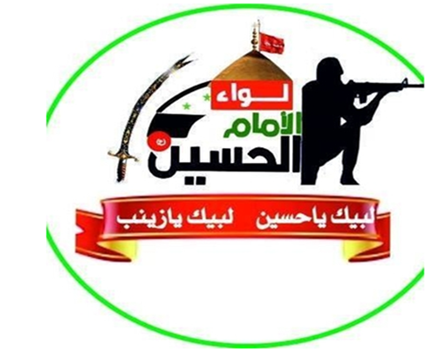
Amjad al- Bahadli, the first commander of the “al-Imam Hussein Brigade”, died of a heart attack in 2017. Sheikh Amjad al- Bahadli was an Iraqi-born member of the Al-Sadri movement. He resided in Syria before the civil conflict began. Amjad al- Bahadli, the first commander of the “al-Imam Hussein Brigade,” appears in one of the videos standing in front of one of the Sayyida Sukhina (daughter of Ali ibn Abi Taleb) temples, saying, “Thank Allah, because this is the first time in five years that we have held prayers in this temple.” “We thank the Syrian leadership, led by Hussein of this generation, Bashar Hafez al-Assad, and the Fourth Division, led by Maher al-Assad, for returning the Temple of Sayyida Sukhina to its loved ones, as well as everyone who participated in this operation from both the Western and Eastern Ghouta (See link to video).

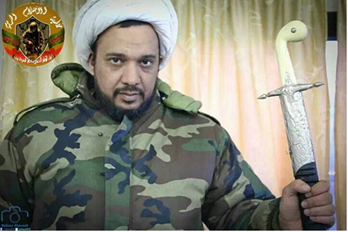
Another video shows Amjad al- Bahadli, in an open area, encouraging his men to fight for Syria. ” Labik Ya Syria” (we are at your command, Syria), ” Labik Ya Bashar Assad” (we are at your command, Bashar Assad). In the film, Amjad states, “We are part of the mixed and united Syrian army, fighting a cruel enemy who does not distinguish between a Shiite, Sunni, Alawite, or Druze fighter, we are brothers, and we will fight together for Syria.”
After Amjad al- Bahadli’s death, his brother, As’ad al-Bahadli, assumed command of the brigade.
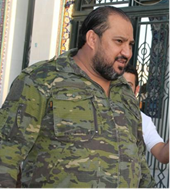
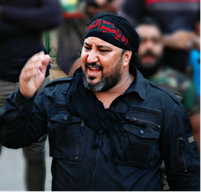
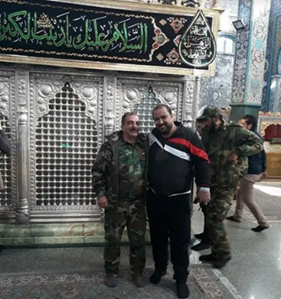
Pictured in the middle: As’ad at the Ashura ceremony in Sayyida Zaynab (the red inscription is in Persian: the call of pain to Imam Hussein).
In the picture on the right: As’ad al-Bahadali (right in sweatpants) visiting Sayyida Zaynab.
On July 21, 2023, the American magazine “Newsweek” published an article regarding the Imam Hussein Brigade (see link).
The article was stated to be based on information from an intelligence report belonging to “one of the United States’ allies.” The militia is known as “the strongest Iranian militia in Syria.” Most of the numbers given by Newsweek relate to the Imam Hussein Brigade’s actions through 2019. This included rocket attacks on Israel in January and June of 2019. There was an attempt to launch a drone assault against Israel in August 2019. After 2019, the most recent data was a drone attack on US forces in Al-Tanf in October 2021 (see Appendix B for details on the attacks).

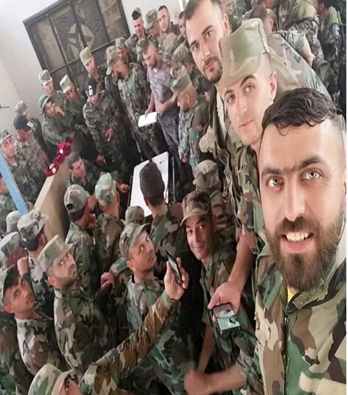
Senior commanders of the al-Imam Hussein Brigade admit that they operate under the command of the 4th Division:
In 2019, some of the brigade’s senior commanders were interviewed (details of the lengthy and fascinating interviews may be found in Appendix C). According to Abu Ali al-Assad (originally from the Syrian village of Nubl in northern Syria), who serves as commander of the “death squad,” which is a unit composed of Syrians and Iraqis (part of the Sayyid Ali al-Karbalai/Ali al-Musawi groups) within the al-Imam Hussein Brigade, the main support comes from the 4th Division. He went on to say that the 4th Division was in charge of wages, armaments, and training.
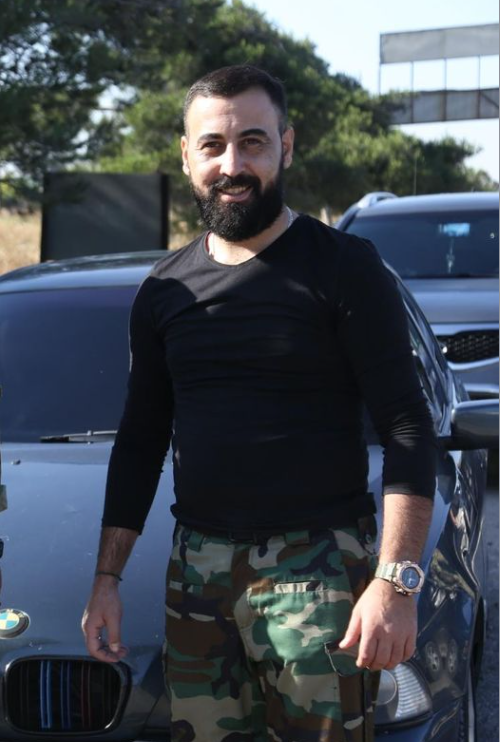
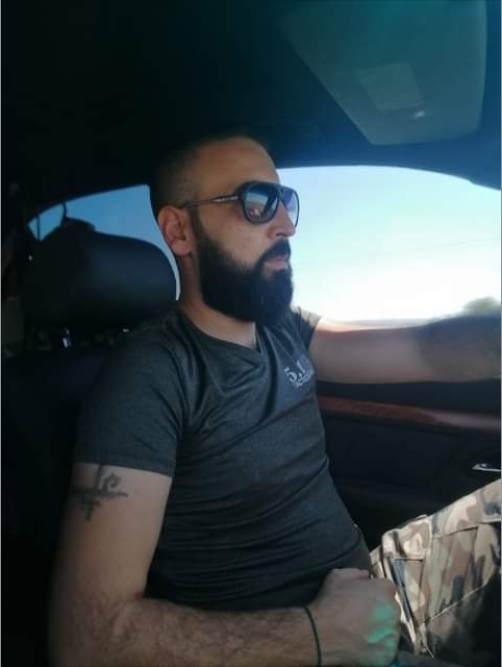
On May 17, 2019, Feras al-Mahdawi, another prominent militia commander of Iraqi descent, stated that all finance and weapons come from the 4th Division. Before the civil conflict, many Iraqis lived in Syria. They played an essential role in forming militias that defended Sayyida Zaynab’s Tomb in Damascus. Feras al-Mahdawi is a Baghdad native who has lived in Syria since 2004 and married a Syrian woman.
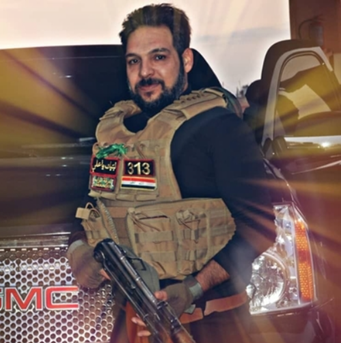
Division 4’s locations that serve as storage facilities for equipment and weapons that arrive via the Iranian corridor:
Several indicators indicate that numerous sites of the 4th Division were attacked during the CBW. The most recent attack in western Damascus (July 19) may have also struck 4th Division installations in the area between Qudssaya- As Saboura and Al Dimass.
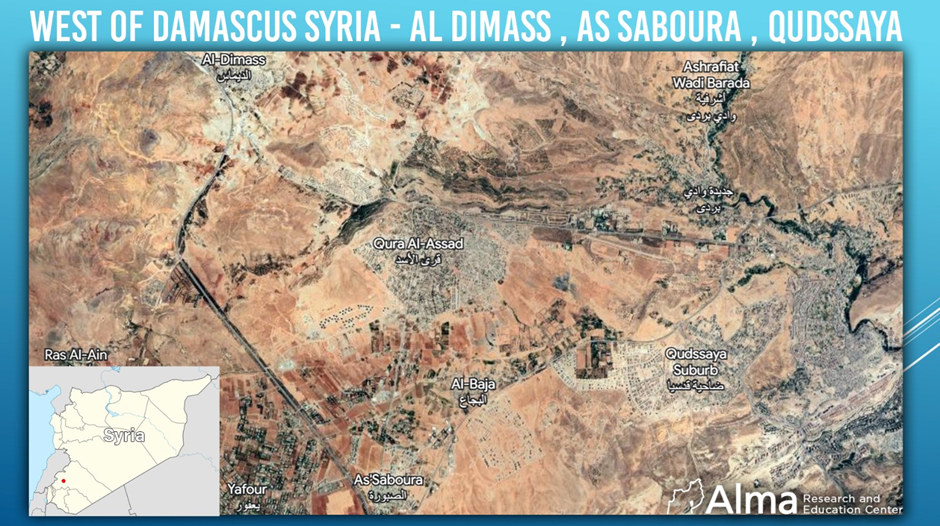
The sites of the Syrian Army’s 4th Division serve, among other things, as storage sites for the large quantity of weapons that reach Syria through the Iranian corridor. These weapons are intended to reach the Iranian proxy in Syria (the Shiite militias), the Syrian army, and Hezbollah in Lebanon.
See our special report on the Iranian corridor to Syria and Lebanon from October 2022.
Is the Syrian Army’s 4th Division actually responsible for carrying out direct offensive operations against Israel and the United States?
The direct offensive activity against Israel in January, June, and August 2019, as well as the direct offensive activity against the US base at Al-Tanf in October 2021 (see Appendix B), were carried out, according to our understanding, by operatives of the al-Imam al-Hussein Brigade while they were active soldiers within the 4th Division. That means the Syrian army’s 4th Division is responsible for direct offensive operations against Israel and the United States.
On April 9, 2023, an interesting incident occurred. The IDF attacked the entrance to the headquarters facility of the 4th Division in western Damascus. This came after three missiles were fired from southern Syria at Israel. The strike on the 4th Division’s entrance was an obvious warning shot. Liwa al-Quds, a Palestinian militia, ostensibly claimed credit for the rocket firing. However, given the damage to the 4th Division facility, it is possible that this was a fabricated claim of responsibility. In practice, Shiite militiamen working as an organic force within the 4th Division could have launched the missiles.
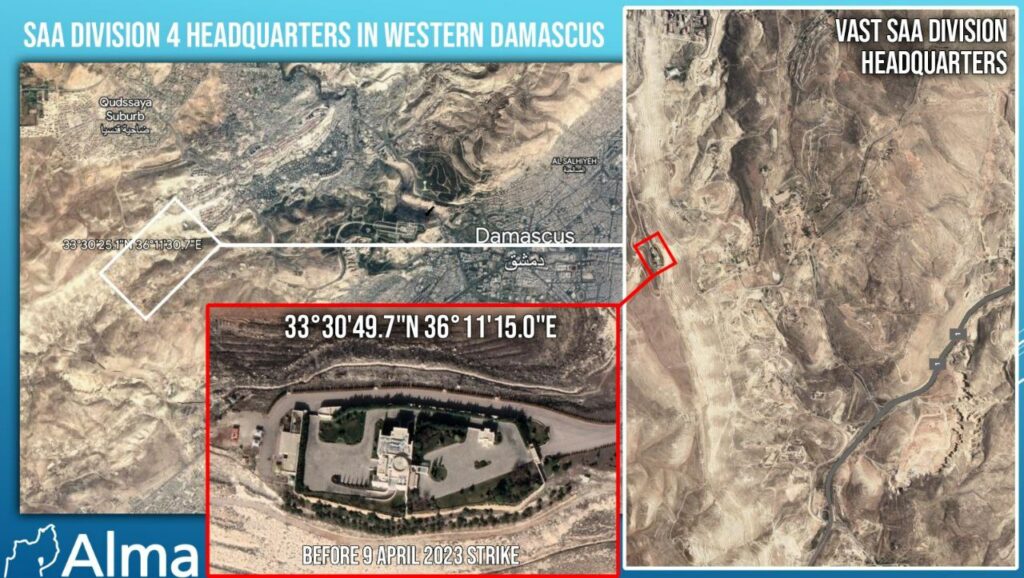
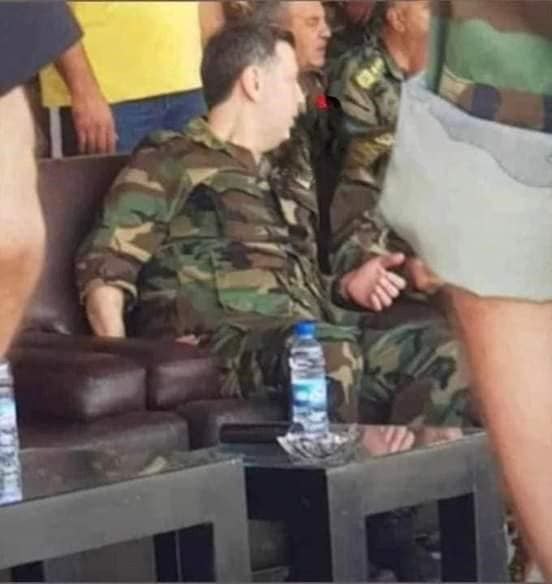
The militia’s Facebook page appears under the name “al-Imam Hussein Brigade, Fourth Lions.”
The Facebook Page was launched in October 2020, with the most current posts in February 2022. We believe that a previous Facebook page was deleted. The present page consists primarily of photos of operatives, routine photos from activists, and several photos of compassion and appreciation for the Assad family with Syrian flags. Videos on the page depict fighting/takeover/operative presence in regions of the brigade’s activity in Syria. The page features images of shaheeds from the brigade. It should be noted that all posts are marked #theFourthDivision / #theFourthDivision, as well as #Maher al-Assad.
Appendix A – The combat zones of the al-Imam Hussein Brigade during the Syrian civil war:
After the surrender of the opposition forces (2018), the Al-Imam Hussein Brigade released images of its members in the town of Beit Jan in the northern Syrian Golan Heights (southern Syria). In the rural districts of Hama and Idlib in northern Syria, the militia also mounted a fierce military campaign against the towns and villages that made up the buffer zone.
The Al-Imam Hussein Brigade participated in most military actions in the Damascus region, particularly in the south of the capital and around Sayyida Zaynab, as part of the battle alongside the Fourth Division. The Iranians then ordered to redeploy the brigade southeast of Damascus to support the Syrian army there due to intense resistance from the opposition forces.
The al-Imam Hussein Brigade last participated in combat in the ongoing civil conflict in Damascus’ eastern Ghouta neighborhood, heavily shelled by Syrian and Russian forces.
A video of the deployment of militia members in a section of the eastern Ghouta city of Harasta was posted on the brigade’s Facebook page. The caption for the video on the militia’s Facebook read: “Ghouta is liberated, Lions of the Fourth Division, al-Imam Hussein Brigade.”
The militia, which presents itself as being tasked with protecting the Sayyida Zaynab temple south of the nation’s capital Damascus, is portrayed in the film as having numerous armed members. The speaker in the video mentioned places like “Hajj Tamer” and “Haj Assad,” which appear to be the militants’ leaders. They claimed they were near Al-Bairouni Hospital in the Harasta neighborhood.
Appendix B – Details of the attacks carried out by the al-Imam Hussein Brigade (within the 4th Division) against US and Israeli forces:
January 2019 – Missile fired from Syria into Israel:
On Sunday, January 20, 2019, an Iranian-made medium-range surface-to-surface missile was fired from Syria at the Golan.
June 2019 – Rocket fire from Syria into Israel:
On June 1, 2019, two missiles that were fired at Mount Hermon in the Golan Heights from the Quneitra region of Syria were located. In close proximity to one of Israel’s military installations on Mount Hermon, one rocket landed in Israeli territory, and the other one landed in Syrian territory.
August 2019 – Attempted launch of UAVs at Israel:
On Saturday, August 24, 2019, Israeli warplanes attacked a site near Damascus from which they were preparing to launch drones at Israel.
October 2021 – Attack on the American base in Al-Tanf:
On Wednesday, October 20, 2021, five unmanned aerial vehicles (UAVs) carried out an airstrike against the American facility in Al-Tanf, carrying the following message from Iran to the US and Israel: “No more patience, and the attack will be equal to an attack.”
The American base was attacked after an CBW airstrike in the Palmyra area a week earlier, on Thursday, October 14, 2021.
Appendix C – Interviews with senior commanders of the Al-Imam Hussein Brigade:
The following is a transcript of an interview with Abu Ali Assad (see https://www.aymennjawad.org/22526/), commander of the “death squad” within the Al-Imam Hussein Brigade (April 20, 2019):
Interviewer: First, when was the Al-Imam Hussein Brigade established and what exactly was its source? Were its commanders originally part of the Abu al-Fadel al-Abbas Brigade?
Abu Ali: Dear Sir, the Al-Imam Hussein Brigade was established by Martyr Sheikh Amjad Al-Bahadali. There is no connection to the Abu al-Fadel Brigade, but they are all our brothers.
Interviewer: Did Sheikh Amjad al-Bahadali, may God have mercy on him, lived in Syria before the crisis?
Abu Ali: That’s right
Interviewer: In which areas did the brigade fight and how many martyrs did it lose?
Abu Ali: We fought in Mu’tamiya, Maliha, Dariya, Darkabia, Khan al-Sheikh, Wadi Barada, Qabwan, Harsta, Hajar al-Aswad, Yarmouk, Daraa, and Idlib. We fought in several areas in eastern and western Ghouta. In every area, we sacrificed dead and wounded.
Interviewer: Is the exact number of Martyrs known?
Abu Ali: I estimate about 40 shaheeds, including commanders.
Interviewer: Did the Islamic resistance, Hezbollah, and its Iranian friends help you with armaments, training, and finances?
Abu Ali: Everyone provided assistance, but in the Al-Imam Hussein Brigade we were supported mainly from the Syrian leadership, the Fourth Division.
Interviewer: When was the brigade attached to the Fourth Division? And what exactly does this mean?
Abu Ali: Since 2012, a group has been established within the brigade and armed by the Fourth Division, after which all the brigade operatives worked with the division.
Interviewer: Yes, that is, salaries, armaments and training are currently from the Fourth Division.
Abu Ali: That’s right.
Interviewer: When exactly was the Death Battalion established?
Abu Ali: 2013. The Death Battalion was established under the auspices of the brigade.
Interviewer: And is it considered the Syrian arm of the brigade?
Abu Ali: Exactly 100 percent.
Interviewer: Are the fighters Syrians from many areas and ethnicities?
Abu Ali: That’s right
Interviewer: Whoever joins the Death Brigade and serves it is considered a flagship service?
Abu Ali: Yes, most of the young people who join are considered servants of the flag.
Interviewer: That means they enlisted on the basis that serving in a battalion is like serving the flag.
Abu Ali: No, only after the decision of the commander of the Fourth Division was this decision implemented.
Interviewer: How do you assess the situation in Syria today in general?
Abu Ali: Excellent
Interviewer: But why hasn’t the liberation of Idlib started yet?
Abu Ali: There may be alternative options from a military campaign, but in the end Idlib will be liberated in any way.
Following is a transcript of an interview with Firas al-Mahdawi (see https://www.aymennjawad.org/22697), senior commander of the Al-Imam Hussein Brigade (May 17, 2019):
Interviewer: Were you with the Abu Fadel al-Abbas Brigades at first?
Feras al-Mahdawi: “I am one of the Hezbollah network. The Abu Fadel Brigade is the first name of the party. I acted as part of a fighting group under Hezbollah in 2013. In the southern sector, Al-Sham, Deraa, Quneitra and Suwayda.
Interviewer: Okay, so at first you worked with Hezbollah
Feras al-Mahdawi: That’s right.
Interviewer: Did you then join the Al-Imam Hussein Brigade?
Feras al-Mahdawi: Yes. Then I joined my Iraqi brothers in the brigade. I was [in the past] with the Lebanese Hezbollah and also worked in securing the Sayyida Zaynab temple.
Interviewer: Does this [Temple Security] belong to the Fourth Division, for example?
Feras al-Mahdawi: No, it belongs to Hezbollah. [It was] before the brigade (Al-Imam Hussein). I continued working during 2015 between fighting and securing the Sayyida Zaynab Temple. Then I joined the Imam (Hussein) Brigade.
Interviewer: Did you fight outside Damascus?
Feras al-Mahdawi: I fought in the suburbs of Hisham and in several provinces.
Interviewer: And you also worked with Army of Hope? (In Arabic, Al-Jaysh al-Muamel, the Islamic resistance force in Iraq, and Sham, an Iraqi Shiite army established to fight in Syria and Iraq against the Islamic State).
Feras al-Mahdawi: I worked with them a little, while it was being established.
Interviewer: Did you fight in Iraq as part of this army?
Feras al-Mahdawi: I didn’t get into battles with them. My work is mainly in Syria. I am a resident of the area. I went on certain visits. The force was in Syria, and many were sent from Iraq to fight in Syria. But there were many men and commanders left.
Interviewer: Yes. I learned that some brothers who live in Syria joined them in Syria. Then they left.
Feras al-Mahdawi: Exactly.
Interviewer: Did they return to the local Iraqi brigades?
Feras al-Mahdawi: This brigade did not last as long as the other brigades in Syria, such as Al-Nujaba or the Imam Ali Brigades.
Interviewer: So, you returned to the Al-Imam Hussein Brigade and to this day you work with the brigade?
Feras al-Mahdawi: Yes.
Interviewer: How do you assess the situation in Syria today?
Feras al-Mahdawi: Praise God, thanks to the determination of the heroes and those who believe in Syria, the situation is very good. We are ready to face any aggression against Syria. Our goal was to defend the land and protect the holy places, whether Muslim or Christian.
Interviewer: Why did you choose to join the Al-Imam Hussein Brigade?
Feras al-Mahdawi: It is a well-known brigade with the best Iraqi youth and is mixed with the youth of Syria and its brigades affiliated with the Syrian Arab army, with my love and appreciation for Hezbollah.
Interviewer: Yes, and everything belongs to the Fourth Division? Weapons, and salaries, etc.?
Feras al-Mahdawi: Yes. All funding from the fourth division.
Interviewer: Did the Syrian state offer you Syrian citizenship in recognition of your sacrifice?
Feras al-Mahdawi: We didn’t fight for citizenship or money. Our goal is to defend our people in Syria and its land from any occupier. Iraqi citizenship is enough for me. I’m proud of it and I’m proud of my second homeland, Syria.

